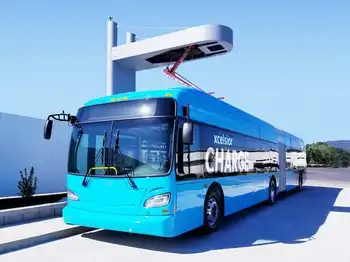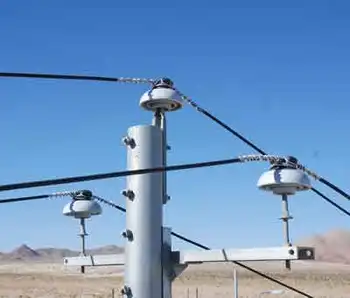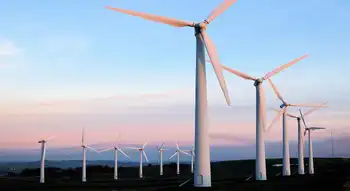Smart grids an intelligent trend
By Investor's Business Daily
High Voltage Maintenance Training Online
Our customized live online or in‑person group training can be delivered to your staff at your location.

- Live Online
- 12 hours Instructor-led
- Group Training Available
Across the country, energy providers are set to deploy smart grids, two-way energy networks that don't just deliver energy to customers, but collect information in an effort to better manage usage across cities and regions.
"Dumb" devices, such as home meters, are being replaced with intelligent products that analyze power use in real time. With better info, electricity users can automatically adjust their power usage to, say, help avoid blackouts during peak demand or save money with off-peak discounts. An air conditioning system can be programmed to raise the temperature in a home a few degrees if energy pricing reaches a certain level.
"Smart grids have the potential to dramatically impact the amount of energy consumed in the U.S.," said Sam Lucero, a senior analyst with ABI Research.
In addition to helping consumers save money, smart grids help power utilities manage energy loads.
The costs of supplying energy can fluctuate wildly during the year because of constantly shifting supply and demand. During a heat wave, a utility may need to buy power on the spot-energy market, typically at a premium. Naturally, those costs are passed on to the consumer.
The California Public Utilities Commission figures that smart metering applications could reduce energy usage in the state by 1,000 megawatts a year.
Market research firm ABI Research expects worldwide shipments of smart meters to rise to 73 million this year, up from 49 million in 2007.
Working with home automation systems, smart meters promise to help customers save money by analyzing the way they use lights, thermostats, heating, air conditioning — even refrigerators and TVs.
Armed with that info, consumers could specify when, say, the dishwasher should operate — when no one is home or at night to take advantage of off-peak rates.
A more elaborate application could send a text message to a homeowner's cell phone if a refrigerator door is open before the food spoils.
In California, power utility Pacific Gas and Electric 's (PCG) SmartMeter system reads and updates users' electric and gas meters as often as once an hour. That saves the company from having to send a meter reader and offers more precise billing.
The upgraded meters also can receive information from the utility for remote upgrades and "future innovations." PG&E says the system will eventually provide information about power outages and other problems for faster fixes.
The power company's SmartAC program, meanwhile, lets customers with specially equipped air conditioners ratchet down power usage during peak demand times. During peak demand, the system turnsthe unit's refrigerating mechanism on and off in 15-minute cycles while keeping the air circulating. Though PG&E says 93% of participants don't notice any difference, customers can opt out for the day when they need to run their air conditioners at full blast.
The SmartAC program operates between May 1 and October 31 and never for more than six hours per day per customer.
Beyond power, smart grids may also shake up the consumer broadband market by giving users another option for fast Internet access.
Broadband-over-power-line networks deliver high-speed Internet access to homes through standard electrical wiring. An adapter plugs into the user's electrical outlet to convert the data signal; the user plugs the computer's ethernet cable into the adapter.
With a data connection possible from any outlet, connecting devices such as high-definition TVs, video game consoles and home-theater equipment becomes much easier.
Backers say the infrastructure is easy to deploy and can reach rural areas not covered by cable and DSL Internet services. But the long-discussed broadband technology still is working to overcome reliability and compatibility issues.
For all of their benefits, smart grids do have a big potential downside: security.
Every network is a potential target for hackers. Smart grids bring that threat to individual homes and give hackers another entry point.
"If a utility puts intelligence in a smart meter, so its network reaches down into consumers' homes, it becomes possible for hackers to use that link to break into energy companies' networks," said Charles Newton, co-founder and analyst with Newton-Evans Research.
If hackers gained control of a smart network they might be able to turn the power on and off to any number of customers, potentially paralyzing an entire area.
Energy companies are trying to apply to the smart grid lessons learned in securing other computer networks.











